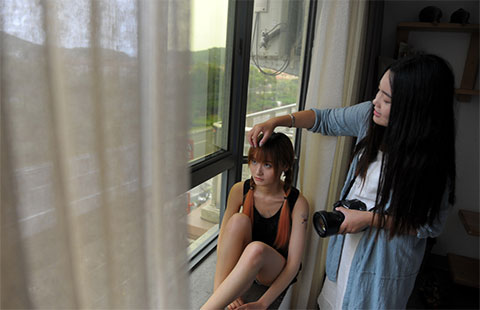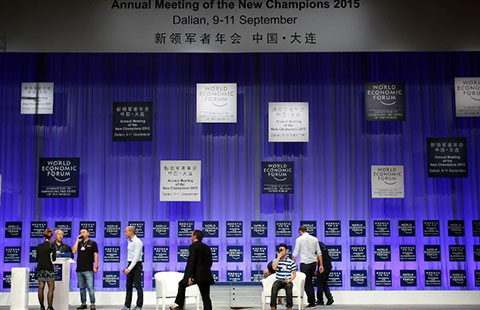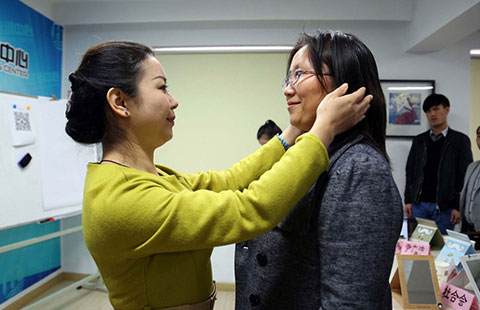Ceramics can help connect cultures
By Simone Haak (China Daily) Updated: 2015-08-24 09:55
My travels in China have had an enormous influence on my work as a Dutch ceramics artist.
In 2012, I first visited Jingdezhen, China's ceramics capital, in Jiangxi province. Since then, I started to read about China and Chinese ceramic arts. During another visit to Jingdezhen this year, I visited Gaoling Mountain, where china clay was first found.
I've been working with clay for almost 40 years. I love the smell of clay and I love working with clay. At that mountain, I saw the caves where people used to dig clay thousands of years ago and the paths they used to walk along. I could even feel the history in the air.
For a ceramics artist, that was a very emotional moment.
Ceramics connect people. Different families from different places and times share the same history of using ceramics. It is the glue of societies.
Through ceramics, people can look back at history by understanding people's taste in things they ate or drank from, how they made them, and why they made it that way.
During a visit to the Shanghai Museum, I was impressed by a 5,000-year-old ceramic pottery piece. It is so old and beautiful. The simple shape reminded me of ancient pottery from South America, which proves that in the beginning we were all the same. You could see how much effort the ancient potters put in this piece from the delicate details. Looking at it, I felt connected with craftsmen from ancient times. I was glad to see that China is protecting its traditions.
In April, I co-founded a ceramics art brand with a 28-year-old Chinese potter, Li Zhen from Jingdezhen. We named the brand Zhenxi, or "to cherish".
The zhen comes from the Chinese artist's first name and xi comes from my Chinese name Ximeng, a transliteration of my Dutch name.
While Jingdezhen is China's ceramics capital, Delft is the ceramics center of Holland and perhaps of Europe. We want to cherish not only the arts but also the connection between the two ceramics capitals.
Through the ceramics connection, I also have become more interested in Chinese culture in general. I have learned to cook Chinese food, and I am taking two classes every week to learn Chinese. During my stay in Beijing in 2013, I cycled around the capital city like other local residents, and enjoyed comparing it with my biking experience in Delft. Every morning after breakfast, instead of coffee, I drank black tea from China's Fujian province.
Tea culture is another important part of Chinese tradition. The first product of our brand will be a group of Chinese tea sets.
I am going to Jingdezhen for another art residency in September. I have a lot in common with my Chinese partner despite the cultural background and age differences. We have the same taste in ceramics, and we both are peaceful people.
Li was my assistant in Jingdezhen over the past three years. But after working together for such a long time, we have built trust between us and we understand each other very well.
The author is a Dutch ceramics artist based in Delft. The views do not necessarily reflect those of China Daily.
- 2015 China International Fair for Investment and Trade kicks off in Xiamen
- China's commodity imports robust in Jan-Aug period
- China stocks rebound 2.92%
- 2015 China box office already past 2014 total
- China foreign trade decline widens in August
- Interview: JP Morgan's senior executive bullish on China
- Innovation, development the focus for NZ mayors
- Lives of freelancers

















